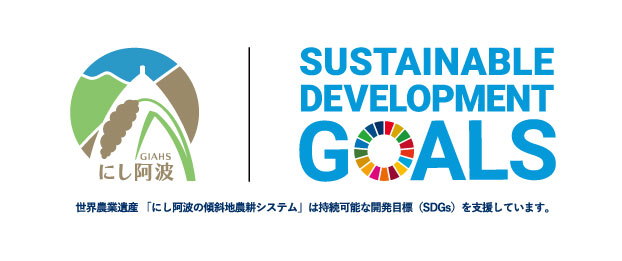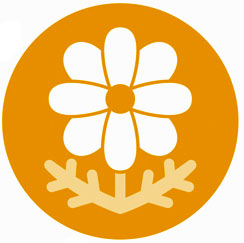What is “GIAHS”?
GIAHS <Globally Important Agricultural Heritage Systems>
The Globally Important Agricultural Heritage Systems (GIAHS) is a system in which regions practicing traditional agriculture, forestry, and fishery, considered especially important worldwide, are granted accreditation by the Food and Agriculture Organization (FAO).
This system designates traditional “systems of agriculture, forestry, and fishery industries” and their associated things, including people, cultures, food, and landscape. These systems are conserved as “living heritages.” The uniqueness of this system is the concept of “Dynamic Conservation”. There are 62 designated sites in 22 countries worldwide, including 11 in Japan (as of March 2022). The "Nishi-Awa Steep Slope Land Agriculture System " was designated as the first GIAHS in the Chugoku and Shikoku regions.
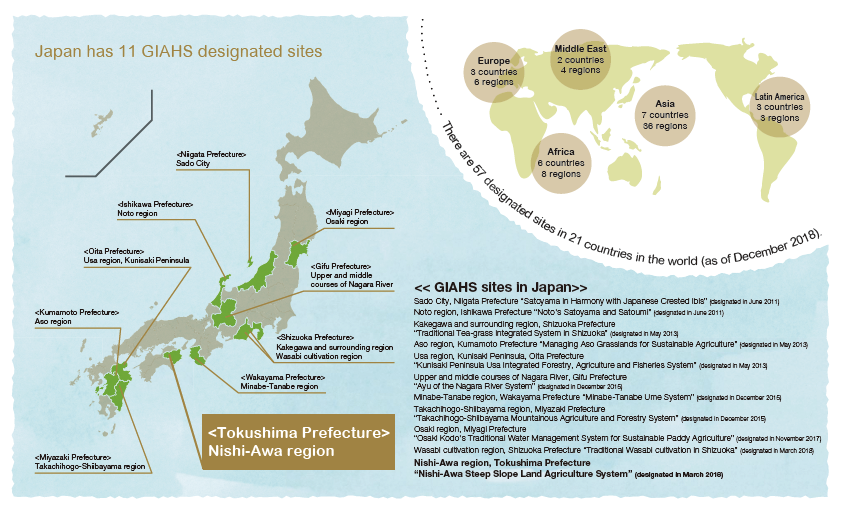
About Nishi-Awa Steep Slope Land Agriculture System
Wisdom to live in the steep slope mountainous area
Nishi-Awa consists of Mima City, Miyoshi City, Tsurugi Town, and Higashi miyoshi Town in the western part of Tokushima Prefecture. Approximately 200 villages are 100–900 meters above sea level in the mountainous region. All these villages stand on steep slopes, some as steep as 40 degrees. Developing flat land and making terraced fields is common for farm work on a mountainous slope. In the Nishi-Awa area, however, farming occurs directly on the slopes. People have conserved their techniques and wisdom to protect nature, their lives, and their villages. Everything about the area, including the landscape of the villages, the food culture, and the traditional events relating to farming, which have been passed down over 400 years, is considered the “Nishi-Awa Steep Slope Land Agriculture System.”
This system has been recognized as sustainable for the future. It can potentially be useful in resolving global problems such as food supply, agriculture crisis, and ecological destruction.

The beauty of the landscape
On the slope of the steep mountains and deep valleys, houses and fields stand as if they were stuck on the land, creating a unique landscape that is hard to find anywhere else.
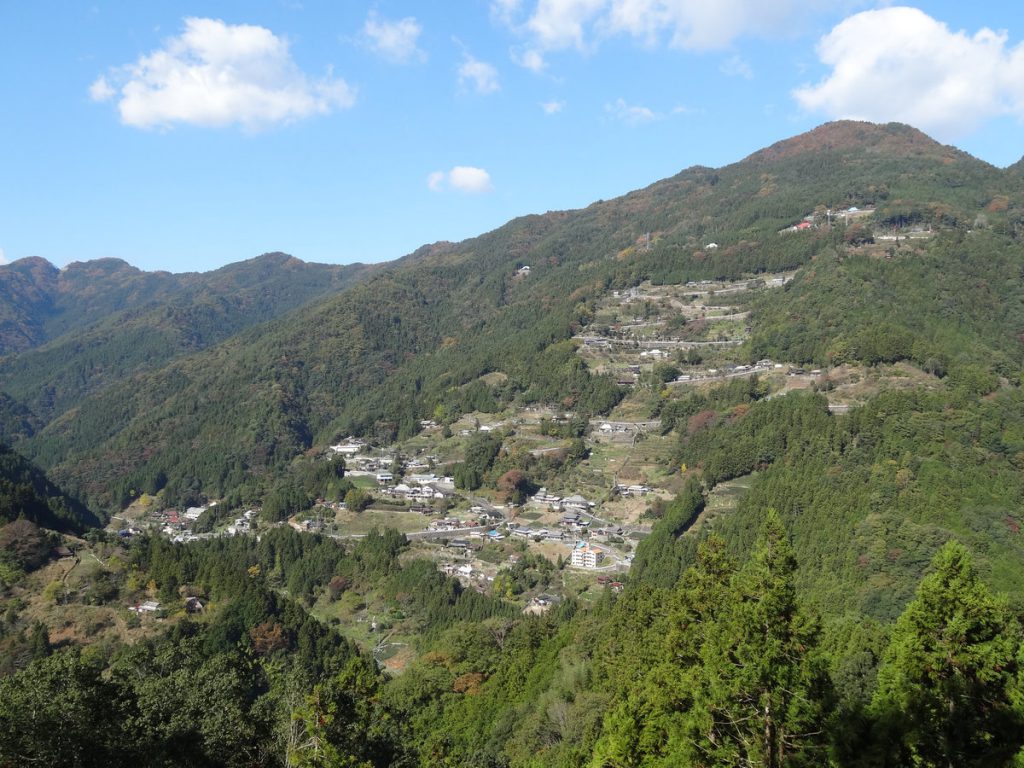
Kageji and Hinoji
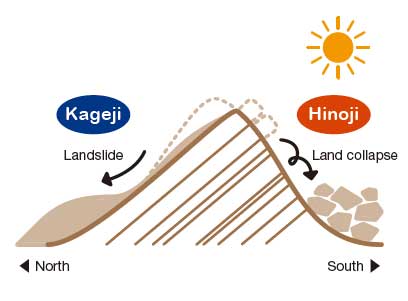
The Nishi-Awa Steep Slope Land Agriculture System is an agricultural system invented for steep slope areas. How could this agricultural landscape happen in Nishi-Awa?
This area stands on one of the largest geologic faults in Japan called the Median Tectonic Line, which was formed by huge plates (bedrocks) clashing together. The faults move dynamically on this line, creating a mountain as the land is raised or deformed.
Mountain ranges were created as the plate shifted from the south to the north, pushing the land upward. In addition, as the land consists of weak layers of green schist (the fracture zone), the slope facing north experienced landslides, although they were gentle slope (Kageji); also, it does not get much sunshine: Conversely, the slopes facing south experienced ample sunlight and have steep slopes due to land collapses (Hinoji). The Nishi-Awa area is thought to have originated when people began to settle on the locations of these landslides and collapses.
The fracture zone contains significant groundwater, leading to landslides and leaving many water sources. Although it is located halfway up the mountain, the Nishi-Awa area is blessed with spring water; this is why people were able to form villages here.
Five points that have been globally recognized!
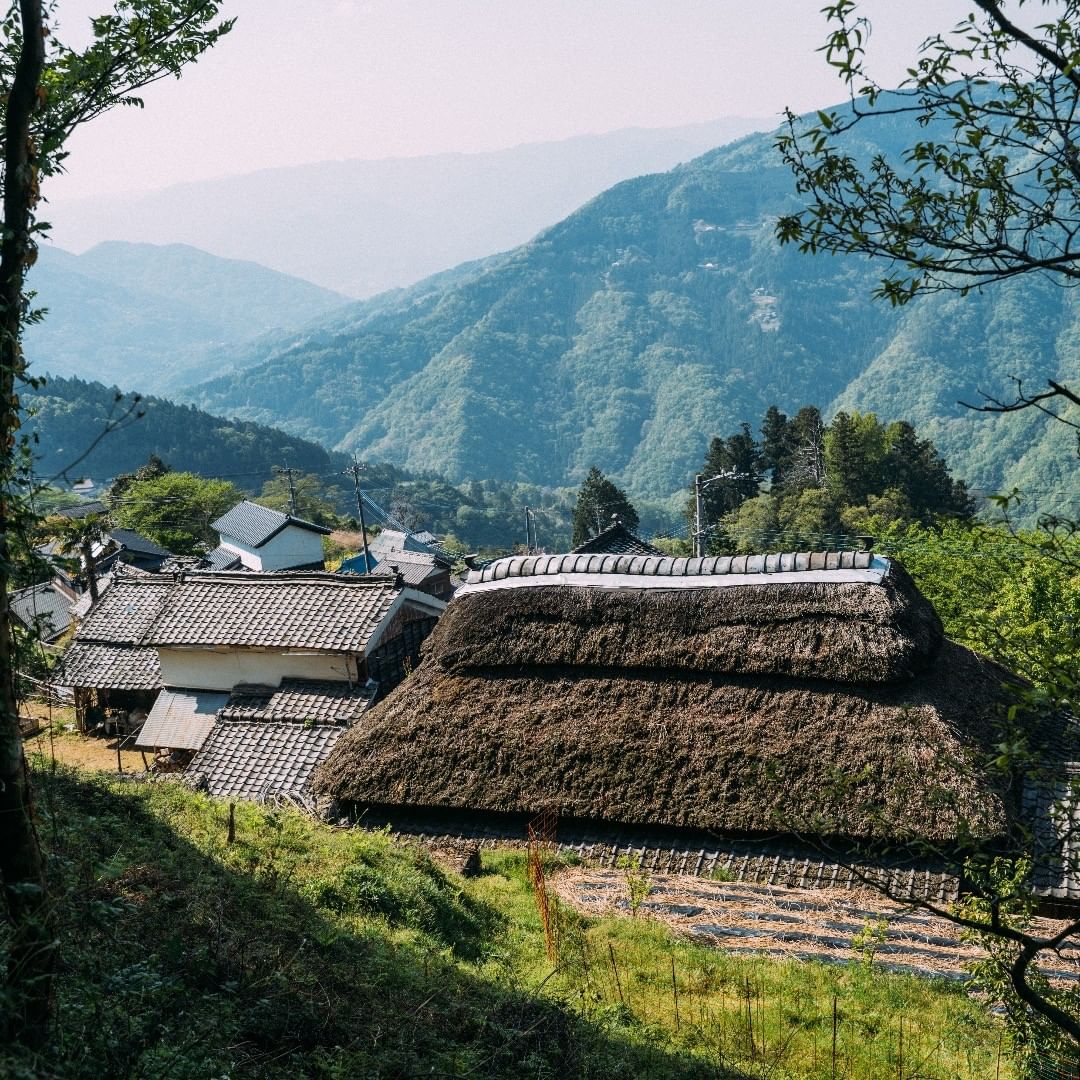
SDGs
